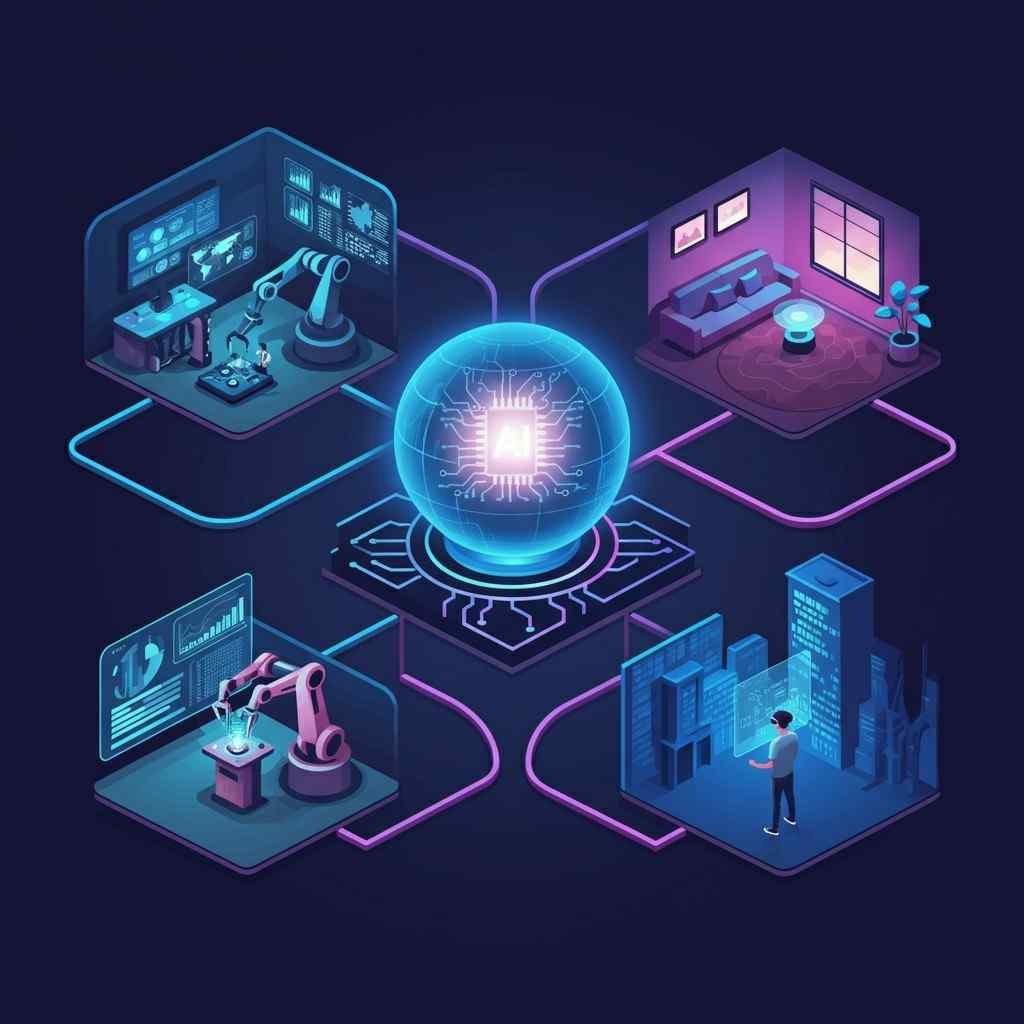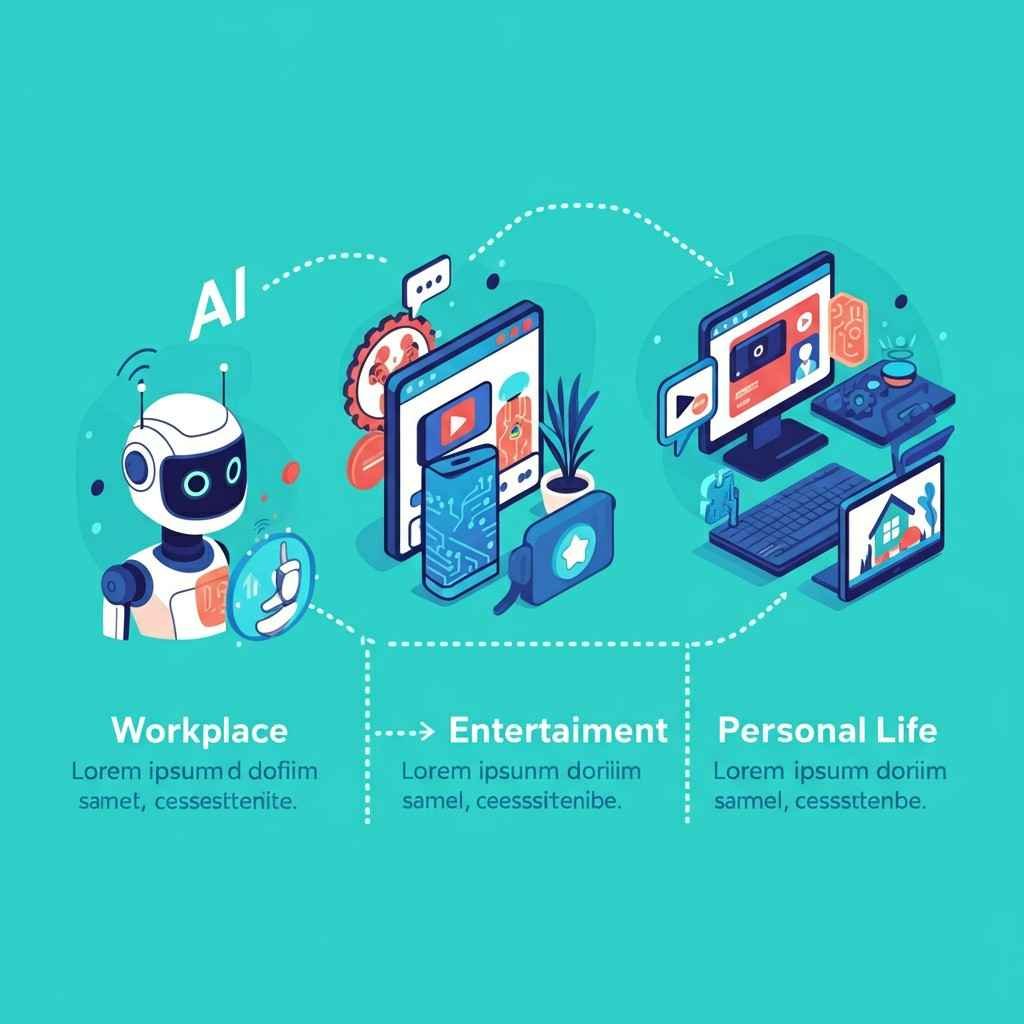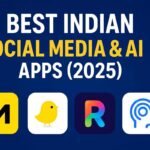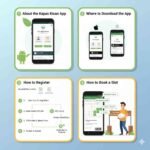
AI in Daily Life
Table of Contents
Introduction
Picture this: You wake up to your phone’s gentle alarm, perfectly timed to your sleep cycle. As you reach for your device, notifications await—your calendar has automatically rescheduled a conflicting meeting, your music app has curated a morning playlist based on your mood patterns, and your shopping app reminds you that you’re low on coffee (because it tracked your usual consumption). Before you’ve even gotten out of bed, artificial intelligence has already made a dozen decisions to improve your day.
This isn’t science fiction. It’s Wednesday morning in 2025.
Artificial intelligence has quietly woven itself into the fabric of our daily existence. What once seemed like futuristic fantasy—machines that think, learn, and anticipate our needs—now powers everything from the route your GPS suggests to the next episode Netflix queues up. We interact with AI hundreds of times each day, often without realizing it. The technology that once required massive computers in research labs now fits in our pockets and responds to our voice commands.
The transformation has been swift and profound. Just a decade ago, most people associated AI with robots in movies or chess-playing computers. Today, it’s the invisible assistant organizing our photos, filtering our emails, and helping us write better. It’s recommending the perfect restaurant for date night, detecting fraud on our credit cards, and even helping doctors spot diseases earlier than ever before.
But here’s what makes this revolution truly remarkable: AI hasn’t replaced human intelligence—it has amplified it. Rather than taking over our lives, it has become the ultimate productivity partner, creative collaborator, and personal assistant rolled into one. It handles the routine tasks we’d rather skip, surfaces information we need when we need it, and opens up possibilities we never knew existed.
AI has moved beyond sci-fi fantasy to become an invisible yet powerful force reshaping how we work, play, and live. It’s not just changing what we do—it’s changing how we think about what’s possible.
Throughout this post, you’ll discover the surprising ways AI is already transforming three key areas of your life. We’ll explore how it’s revolutionizing workplaces by automating tedious tasks and enhancing creativity, making entertainment more personalized and engaging than ever before, and helping manage everything from your health to your household with unprecedented precision. You’ll also get a glimpse into the exciting future applications on the horizon, along with practical insights on navigating the challenges and opportunities that come with our AI-enhanced world.
Whether you’re an early adopter who embraces every new tech tool or someone who prefers to understand before diving in, this exploration will help you see AI not as something to fear, but as a powerful ally in creating a more efficient, entertaining, and enriching daily experience.
The AI revolution isn’t coming—it’s already here. The question isn’t whether it will change your life, but how you can make the most of the transformation that’s already underway.
AI Revolutionizing the Workplace
The modern workplace is experiencing a quiet revolution. While we debate the future of AI, it’s already reshaping how millions of people work every single day. From the marketing assistant who uses AI to write first drafts to the software developer whose code gets completed before they finish typing, artificial intelligence has become the ultimate workplace companion.
This transformation isn’t about replacing human workers—it’s about amplifying human capabilities. AI handles the repetitive tasks that drain our energy, surfaces insights we might miss, and frees us to focus on the creative, strategic work that only humans can do. The result? A workplace that’s more productive, more innovative, and surprisingly more human.
Productivity and Automation Tools
The days of drowning in administrative tasks are rapidly ending. AI-powered productivity tools have emerged as the great equalizer, giving everyone access to capabilities that once required entire support teams.
Smart scheduling has revolutionized how we manage time. Tools like Calendly and Motion don’t just book meetings—they analyze your work patterns, energy levels, and priorities to suggest optimal scheduling. Motion’s AI scheduler considers your focus time preferences, meeting fatigue patterns, and even the complexity of upcoming tasks when arranging your day. One marketing director reported saving 4 hours per week simply by letting AI handle her calendar optimization.
Document automation has transformed routine paperwork from a tedious chore into a seamless process. AI templates can generate contracts, proposals, and reports by pulling relevant information from your existing files and databases. Law firms use AI to draft standard legal documents, while consulting companies generate project proposals that automatically incorporate client-specific details and pricing structures. What once took hours of copying, pasting, and reformatting now happens in minutes.
Email management represents perhaps the most universally appreciated AI advancement. Gmail’s Smart Compose doesn’t just finish your sentences—it learns your writing style and suggests contextually appropriate responses. Boomerang’s AI prioritizes your inbox by analyzing the importance and urgency of each message. For busy executives processing hundreds of emails daily, these tools have become indispensable. One CEO noted that AI-powered email sorting helped her achieve “inbox zero” for the first time in five years.
Data analysis tools have democratized insights that once required specialized analysts. Microsoft Excel’s AI-powered insights automatically identify trends, anomalies, and correlations in your spreadsheets. Tableau’s Ask Data feature lets you query complex datasets using natural language—simply type “show me sales trends by region” and watch as comprehensive visualizations appear. Small business owners can now spot market opportunities and operational inefficiencies without hiring expensive consultants.
Creative and Knowledge Work Enhancement
The most surprising workplace AI revolution isn’t happening in factories or warehouses—it’s transforming the most human aspects of work: creativity and knowledge synthesis.
Writing assistants have evolved far beyond spell-checkers. Grammarly’s AI doesn’t just catch typos; it understands context, tone, and audience to suggest improvements that enhance clarity and impact. Jasper helps content marketers generate initial drafts, while Notion AI helps teams collaborate on documents by suggesting content, restructuring paragraphs, and even translating complex technical concepts into accessible language. A content marketing agency reported increasing their output by 40% while improving quality scores, simply by using AI as a writing partner rather than a replacement.
Design tools powered by AI are democratizing visual creativity. Canva’s Magic Design creates professional layouts from simple text prompts, while Adobe’s AI features can remove backgrounds, match colors, and suggest design improvements in real-time. Even complex tasks like logo creation and brand design are becoming accessible to non-designers. A small nonprofit increased their social media engagement by 200% after using AI design tools to create more visually appealing content.
Code completion and debugging assistance has transformed software development from a sometimes frustrating puzzle into a more fluid creative process. GitHub Copilot suggests entire functions based on comments, while tools like DeepCode identify potential bugs and security vulnerabilities before they cause problems. Developers report spending more time on architecture and innovation rather than syntax and debugging. One startup’s development team increased their feature release velocity by 60% after integrating AI coding assistants.
Research and information synthesis capabilities have revolutionized knowledge work across industries. AI tools can scan thousands of documents to identify key insights, trends, and connections that would take humans weeks to uncover. McKinsey’s research found that AI-powered research assistants helped consultants reduce preparation time for client presentations by up to 70%. Academic researchers use AI to identify relevant papers, summarize complex findings, and even suggest new research directions based on gaps in the literature.
Remote Work and Collaboration
The shift to remote and hybrid work created new challenges—and AI stepped in with solutions that have made distributed teams more connected and productive than ever before.
Virtual meeting transcription and summaries have solved one of remote work’s biggest pain points: meeting overload and information retention. Otter.ai and Microsoft Teams’ transcription features don’t just record what’s said—they identify action items, key decisions, and follow-up tasks. Some platforms even generate meeting summaries and distribute them to participants automatically. A distributed software company found that AI meeting summaries reduced follow-up confusion by 80% and ensured remote team members never missed important decisions.
Real-time language translation has broken down barriers for global teams. Microsoft Teams and Zoom now offer live translation in dozens of languages, enabling seamless collaboration across linguistic boundaries. Google Workspace’s translation features help teams share documents and communicate effectively regardless of their native language. A international consulting firm reported that AI translation tools helped them reduce project timelines by eliminating translation delays and miscommunications.
AI-powered project management has brought unprecedented visibility and predictability to complex initiatives. Tools like Monday.com use AI to predict project bottlenecks, suggest resource reallocations, and identify risks before they impact deadlines. Asana’s AI features automatically categorize tasks, suggest dependencies, and even predict which projects might need additional support. Project managers report making more proactive decisions and experiencing fewer last-minute crises.
Enhanced video conferencing features powered by AI have made remote meetings more engaging and productive. Background noise cancellation ensures clear communication even from busy coffee shops or home offices. Eye contact correction makes video calls feel more natural and connected. Some platforms use AI to analyze meeting dynamics, suggesting when someone hasn’t spoken in a while or identifying when energy levels are dropping. These subtle enhancements have made remote collaboration feel more human, not less.
The workplace AI revolution isn’t just changing what we do—it’s changing how we think about work itself. By handling routine tasks and augmenting human capabilities, AI is creating space for the uniquely human skills that drive innovation: creativity, empathy, strategic thinking, and complex problem-solving. The future workplace won’t be about humans versus machines—it will be about humans with machines, working together to achieve more than either could accomplish alone.
Entertainment and Leisure Transformation
Remember when choosing what to watch meant flipping through TV channels or browsing rows of DVDs at Blockbuster? Those days feel like ancient history. Today’s entertainment landscape is powered by algorithms that know your preferences better than you know them yourself, creating experiences so personalized they feel almost magical.
AI hasn’t just digitized entertainment—it has fundamentally reimagined what leisure time can be. From the moment you open your streaming app to the games you play and the people you meet online, artificial intelligence is crafting experiences tailored specifically for you. This transformation goes beyond simple recommendations; it’s creating entirely new forms of interactive entertainment and revolutionizing how we connect with others.
The entertainment industry’s embrace of AI represents more than technological advancement—it’s a shift toward hyper-personalization that makes every leisure moment more engaging, more relevant, and more satisfying than ever before.
Personalized Content Consumption
The era of one-size-fits-all entertainment is over. AI has ushered in the age of “entertainment that gets you,” where platforms don’t just offer content—they curate experiences that feel handpicked for your exact tastes and mood.
Netflix’s recommendation engine has become legendary for good reason. The platform analyzes over 1,000 different data points for each user, from obvious factors like what you watch and rate, to subtle behaviors like when you pause, rewind, or abandon a show. It considers the time of day you watch, the device you’re using, and even how long you spend browsing before making a selection. The algorithm has become so sophisticated that it creates multiple versions of artwork for the same movie or show, displaying the version most likely to catch your specific attention. A thriller might show an action scene to adventure lovers but highlight the romantic subplot for fans of relationship dramas.
This personalization has proven remarkably effective. Netflix reports that 80% of the content watched on their platform comes from algorithmic recommendations rather than user searches. Users save an estimated 60 hours per year that they would otherwise spend browsing for something to watch.
Spotify’s AI takes music personalization to extraordinary levels. The platform’s Discover Weekly playlist, powered by collaborative filtering and natural language processing, introduces users to an average of 30 new songs each week with a 40% save rate—meaning nearly half of all recommendations resonate enough for users to add them to their libraries. Spotify’s AI analyzes not just what you listen to, but when you listen, how long you listen, and what you skip. It even examines the audio characteristics of songs you enjoy to find similar tracks you’ve never heard.
The platform’s Daily Mix playlists blend familiar favorites with new discoveries, creating the perfect soundtrack for different moods and activities. One user discovered that Spotify’s AI had created a “Sunday Morning Coffee” mix that perfectly captured her weekend vibe, featuring a blend of indie folk and jazz she never would have found on her own.
Social media platforms have transformed from simple sharing tools into sophisticated content curation engines. Instagram’s algorithm considers hundreds of factors to determine what appears in your feed, from your relationship with the poster to your historical engagement with similar content types. TikTok’s “For You” page has become famous for its uncanny ability to surface content that keeps users scrolling for hours.
The platform’s algorithm is so effective at understanding user preferences that it often introduces people to content categories they didn’t know they enjoyed. Cooking enthusiasts discover woodworking videos, fitness buffs find themselves watching educational content about space exploration, and parents stumble upon life hacks that genuinely improve their daily routines.
News consumption has been revolutionized through AI personalization. Google News uses machine learning to analyze your reading patterns, time spent on articles, and sharing behavior to create a personalized news feed that balances your interests with important breaking news. The platform ensures you stay informed about major events while diving deeper into topics that matter most to you.
Apple News+ takes this further by learning not just what topics interest you, but which writing styles and publication approaches you prefer. Some users gravitate toward data-heavy analysis, while others prefer narrative storytelling—the AI adapts accordingly, creating a news experience that feels crafted by a personal editor who knows your preferences intimately.
Gaming platforms have embraced AI personalization to create more engaging player experiences. Steam’s recommendation engine analyzes your game library, playtime patterns, and even which achievements you pursue to suggest new titles. Xbox Game Pass uses similar technology to highlight games from its vast library that match your playing style and interests.
Interactive Entertainment
AI has transformed entertainment from a passive experience into an interactive adventure where the content responds to your presence, choices, and preferences in real-time.
Video game AI has evolved far beyond simple enemy behavior patterns. Modern games feature non-player characters (NPCs) that remember your past interactions, adapt their dialogue based on your playing style, and create unique storylines that respond to your choices. The game “Red Dead Redemption 2” features AI characters with such sophisticated behavioral patterns that they feel like real people with their own daily routines, relationships, and reactions to your actions.
AI-driven procedural generation has created games that are different for every player. “No Man’s Sky” uses AI algorithms to generate an entire universe of planets, each with unique ecosystems, weather patterns, and wildlife. With over 18 quintillion possible planets, no two players will ever have identical exploration experiences. Similarly, “Minecraft” uses AI to generate infinite worlds where the landscape, resources, and challenges are unique to each player’s journey.
Narrative games powered by AI are creating storytelling experiences that adapt to player choices in unprecedented ways. “Detroit: Become Human” features branching storylines so complex that players can experience entirely different stories based on their decisions. The game’s AI tracks thousands of variables to create personalized narrative outcomes that feel organic rather than scripted.
Virtual reality experiences enhanced by machine learning have created immersive entertainment that was unimaginable just a few years ago. VR fitness apps use AI to analyze your movements and create personalized workout routines that adapt in real-time to your performance and energy levels. Virtual travel experiences powered by AI can simulate historical periods so accurately that users feel transported to ancient Rome or medieval castles, complete with authentic sounds, smells, and interactive elements.
AI-powered chatbot companions have evolved into sophisticated entertainment platforms. Character.AI allows users to have conversations with AI versions of historical figures, fictional characters, or entirely original personalities. Users report spending hours discussing philosophy with Socrates, getting writing advice from Shakespeare, or exploring scientific concepts with Einstein. These interactions feel remarkably authentic, with each AI character maintaining consistent personality traits, knowledge bases, and conversational styles.
The emergence of AI-generated creative content has opened entirely new entertainment categories. AI can now compose music in any style, create artwork in any genre, and even write poetry or short stories tailored to individual preferences. Platforms like AIVA compose personalized background music for videos, while DALL-E and Midjourney create custom artwork based on text descriptions.
One particularly innovative application is AI-generated bedtime stories for children. Apps like StoryTime use AI to create personalized tales featuring the child as the main character, incorporating their favorite animals, activities, and moral lessons their parents want to emphasize. Each story is unique, engaging, and perfectly tailored to the child’s interests and developmental stage.
Live entertainment has been transformed through AI as well. Concerts now feature AI-powered lighting and sound systems that respond to the music and crowd energy in real-time. Some venues use AI to analyze audience reactions and adjust the performance accordingly, creating a feedback loop between performers and audience that enhances the live experience.
Social Connection and Community
AI has revolutionized how we find, connect with, and maintain relationships with others, creating more meaningful social connections through intelligent matching and interaction facilitation.
Dating apps have evolved from simple profile browsing to sophisticated matchmaking systems that consider compatibility factors humans might never consciously consider. Bumble’s AI analyzes conversation patterns to identify which matches are most likely to lead to meaningful connections. The algorithm considers factors like response time, message length, shared interests mentioned in conversations, and even the types of questions people ask each other.
eHarmony’s compatibility matching system uses AI to analyze responses to hundreds of personality questions, creating matches based on psychological compatibility rather than just surface-level attraction. The platform reports that marriages resulting from their AI-powered matching have a lower divorce rate than traditional dating methods, suggesting that algorithmic compatibility assessment can identify relationship potential more effectively than human intuition alone.
Hinge’s “Most Compatible” feature uses machine learning to identify one daily match with exceptional compatibility potential. The algorithm analyzes successful relationship patterns across their entire user base to identify characteristics that predict long-term compatibility. Users report that these AI-selected matches result in more engaging conversations and successful dates than their own browsing choices.
Social media content creation tools have democratized high-quality content production, enabling more people to build communities around their interests and expertise. AI-powered editing tools can transform smartphone videos into professional-looking content, automatically adding captions, music, and visual effects that increase engagement and reach.
Instagram’s AI-powered creation tools help users optimize their posts for maximum engagement. The platform suggests hashtags, optimal posting times, and even content ideas based on trending topics in their niche. Small business owners and content creators report significant growth in their audiences after leveraging these AI insights.
Virtual event experiences have transformed how communities gather and interact online. AI-powered platforms like Hopin and Remo create virtual environments that feel more like physical gatherings than traditional video conferences. AI algorithms facilitate networking by matching attendees with similar interests, suggest relevant sessions based on professional backgrounds, and even create virtual “hallway conversations” between presentations.
Professional networking has been revolutionized through AI-powered platforms that go beyond simple connection requests. LinkedIn’s AI analyzes your professional background, career goals, and interaction patterns to suggest connections who could genuinely advance your career or offer valuable collaboration opportunities. The platform’s AI also identifies skill gaps in your profile and suggests learning opportunities that could enhance your professional prospects.
AI-powered language exchange platforms have created global communities of learners who help each other master new languages. Apps like HelloTalk use AI to match conversation partners based on language learning goals, availability, and personality compatibility. The AI provides real-time translation assistance and conversation prompts to keep exchanges flowing naturally, even when language barriers exist.
Community management has been enhanced through AI tools that help online communities maintain positive, engaging environments. AI moderation systems can identify potentially harmful content, suggest community guidelines based on successful similar communities, and even predict which types of posts will generate the most positive engagement.
Discord servers use AI to automatically organize conversations, suggest relevant channels for discussions, and identify community members who might benefit from connecting based on shared interests. These features help large online communities maintain the intimate feel of smaller groups while scaling to thousands of members.
Gaming communities have been transformed through AI-powered clan matching and team formation systems. Competitive games like “Overwatch” and “League of Legends” use AI to create balanced teams not just based on skill level, but on communication styles, preferred playing times, and complementary gameplay approaches. This has reduced toxicity in online gaming while creating more satisfying competitive experiences.
The transformation of entertainment and leisure through AI represents more than technological advancement—it’s a fundamental shift toward experiences that truly understand and respond to individual preferences, moods, and social needs. Whether we’re discovering new music, exploring virtual worlds, or connecting with like-minded people across the globe, AI has made leisure time more personalized, more engaging, and more meaningful than ever before.
This personalized entertainment revolution
Personal Life and Daily Management
Your smartphone buzzes with a gentle reminder to take your evening vitamins. Your smart thermostat has already adjusted the temperature for optimal sleep, your investment app has rebalanced your portfolio based on market changes, and your grocery list has automatically updated based on what you’ve consumed this week. This isn’t the future—it’s how AI is quietly revolutionizing personal life management today.
The transformation of personal life through artificial intelligence represents perhaps the most intimate revolution of our time. Unlike workplace AI that enhances productivity or entertainment AI that improves leisure, personal life AI becomes a trusted companion that learns your habits, anticipates your needs, and helps you live healthier, more organized, and more financially secure.
This isn’t about replacing human judgment with machine decisions. Instead, it’s about having an intelligent assistant that remembers what you forget, notices patterns you miss, and provides gentle guidance toward your personal goals. From morning routines to bedtime habits, AI is becoming the invisible infrastructure that supports better daily living.
Health and Wellness
The healthcare revolution isn’t happening in hospitals—it’s happening on your wrist, in your pocket, and through apps that know more about your body than you might realize. AI has transformed health management from reactive treatment to proactive wellness optimization.
Fitness tracking has evolved far beyond counting steps. Modern fitness wearables use machine learning to understand your unique physiology and create personalized recommendations that adapt in real-time. The Apple Watch’s heart rate variability monitoring can detect early signs of illness before you feel symptoms, while Fitbit’s sleep score uses AI to analyze your sleep stages and provide actionable insights for better rest.
Whoop takes fitness tracking to professional athlete levels for everyday users. The device’s AI analyzes your heart rate, sleep patterns, and activity levels to calculate daily strain and recovery scores. It learns your individual response patterns to different types of exercise, stress, and lifestyle factors, providing personalized recommendations for when to push harder or when to prioritize recovery. Professional athletes credit similar data insights with extending their careers and preventing injuries.
Personalized workout recommendations have made having a personal trainer accessible to everyone. Apps like Freeletics use AI to create workout plans that adapt based on your performance, available equipment, and fitness goals. The AI notices if you’re struggling with certain exercises and automatically adjusts future workouts to build strength in those areas gradually.
Nike Training Club’s AI analyzes your workout history and performance metrics to suggest progressions that challenge you without causing burnout or injury. One user reported that the app’s AI helped her progress from struggling with basic bodyweight exercises to completing advanced HIIT workouts over six months, adjusting the difficulty curve perfectly to maintain motivation without overwhelming her.
Mental health applications powered by AI have democratized access to therapeutic support. Woebot, an AI-powered chatbot therapist, uses cognitive behavioral therapy techniques to help users manage anxiety, depression, and stress. The AI provides 24/7 availability, allowing users to process emotions and receive support whenever needed, not just during scheduled appointments.
Headspace’s AI personalizes meditation recommendations based on your stress levels, sleep patterns, and stated goals. The app learns whether you prefer guided meditations or nature sounds, shorter sessions or longer practices, and adjusts its suggestions accordingly. Users report that personalized meditation recommendations increase their consistency and effectiveness compared to following generic programs.
Mood tracking apps like Daylio use AI to identify patterns between your activities, moods, and external factors. The AI might notice that your mood consistently dips on Sundays or improves after outdoor activities, providing insights that help you make lifestyle adjustments for better mental health.
Sleep optimization has become a science thanks to AI analysis of sleep patterns. Sleep Cycle’s AI analyzes your movement and breathing patterns to determine optimal wake times within your sleep cycles, helping you feel more refreshed even with the same amount of sleep. The app learns your individual sleep patterns and can predict which nights you’ll have poor sleep based on your daily activities and stress levels.
Eight Sleep’s smart mattress uses AI to optimize temperature throughout the night for each side of the bed. The system learns your sleep patterns and automatically adjusts heating and cooling to keep you in deep sleep longer. Users report falling asleep faster and experiencing fewer nighttime awakenings after the AI optimizes their sleep environment.
Nutrition tracking and meal planning have been transformed through AI-powered food recognition and personalized recommendations. MyFitnessPal’s AI can identify foods from photos, making calorie tracking effortless. The app learns your eating patterns and provides personalized suggestions for meeting nutritional goals while accommodating your preferences and lifestyle.
Noom’s approach combines AI-powered food logging with personalized coaching based on behavioral psychology. The AI identifies eating patterns that sabotage weight loss goals and provides specific strategies for overcoming them. Rather than generic meal plans, Noom’s AI creates personalized approaches that work with your schedule, food preferences, and psychological triggers.
PlateJoy uses AI to generate meal plans that consider dietary restrictions, cooking skill level, available time, and family preferences. The AI learns from your feedback about recipes you enjoyed or found too complex, continuously refining its recommendations. Busy parents report saving hours each week on meal planning while improving their family’s nutrition through AI-generated meal plans.
Symptom tracking and early health detection represent some of AI’s most promising healthcare applications. Apps like Ada use AI to analyze reported symptoms and provide guidance on whether medical attention is needed. While not replacing professional medical diagnosis, these tools help users make informed decisions about their health and identify concerning patterns early.
Diabetes management has been revolutionized through AI-powered continuous glucose monitors that predict blood sugar trends and recommend insulin adjustments. These systems learn individual response patterns to different foods, exercises, and stressors, providing personalized management strategies that improve glucose control and quality of life.
Smart Home Integration
The smart home revolution has transformed houses from static structures into responsive environments that anticipate needs, optimize comfort, and enhance daily routines through intelligent automation.
Voice-activated home control systems have evolved from simple command executors to sophisticated home management assistants. Amazon’s Alexa and Google Assistant now understand context and can manage complex routines with simple voice commands. Saying “Good morning” might trigger your AI to gradually increase lighting, start your coffee maker, provide a weather update, and begin playing your preferred morning news briefing.
These systems learn your patterns and preferences over time. If you consistently ask for the living room lights to be dimmed at 8 PM while watching TV, your AI assistant will eventually suggest creating an automatic routine. One family found that their smart home AI reduced their evening routine from 15 minutes of manual adjustments to a single voice command.
Advanced voice control extends beyond basic commands to natural conversation. You can ask, “Is it warm enough to open the windows?” and your AI will consider indoor temperature, outdoor conditions, humidity levels, and air quality before providing recommendations. This contextual understanding makes smart homes feel truly intelligent rather than simply automated.
Energy efficiency optimization through AI has made homes more environmentally friendly while reducing utility bills. Smart thermostats like Nest and Ecobee use machine learning to understand your schedule, preferences, and home’s thermal characteristics. They automatically adjust temperature settings to minimize energy use while maintaining comfort.
These systems consider factors like outdoor temperature, humidity, time of day, and occupancy patterns to make micro-adjustments throughout the day. Nest reports that their AI-powered thermostat saves users an average of 15% on heating and cooling costs by learning optimal efficiency patterns for each unique home.
Smart lighting systems use AI to adjust brightness and color temperature based on time of day, activities, and personal preferences. Philips Hue’s AI gradually shifts from bright, cool light in the morning to warm, dim light in the evening, supporting natural circadian rhythms. The system learns your routines and can automatically create lighting scenes for different activities like reading, cooking, or relaxing.
Water usage optimization through smart irrigation systems saves both water and money. Rachio’s AI analyzes weather forecasts, soil conditions, plant types, and seasonal growth patterns to create efficient watering schedules. The system automatically skips watering when rain is predicted and adjusts watering duration based on evaporation rates and plant needs.
Security and safety monitoring has been enhanced through AI-powered systems that distinguish between normal and concerning activity. Modern security cameras use machine learning to differentiate between family members, delivery personnel, and potential intruders. They can recognize familiar faces and only send alerts for unfamiliar individuals or suspicious behavior patterns.
Ring’s AI can identify the difference between a person, package, vehicle, or animal, providing specific notifications that help homeowners respond appropriately. The system learns your family’s routines and can detect unusual activity patterns, like someone entering the house at an unexpected time or movement in areas that should be empty.
Smart smoke and carbon monoxide detectors like Nest Protect use AI to distinguish between different types of threats and provide specific guidance. Rather than generic alarms, these devices can announce “There’s smoke in the kitchen” or “Carbon monoxide levels are rising in the basement,” helping residents respond more effectively.
Fall detection and health monitoring for elderly residents use AI to analyze movement patterns and identify potential emergencies. These systems can differentiate between normal activities and situations requiring assistance, automatically contacting family members or emergency services when needed.
Automated grocery ordering and inventory management have eliminated the frustration of running out of essentials. Amazon’s Dash Replenishment uses AI to track usage patterns for household items and automatically reorder them before you run out. The system learns your consumption patterns for items like laundry detergent, coffee, and paper towels, adjusting order timing based on seasonal variations and usage changes.
Smart refrigerators with internal cameras and AI can track food inventory, suggest recipes based on available ingredients, and create shopping lists for items approaching expiration. Samsung’s Family Hub refrigerator uses AI to recognize food items and track expiration dates, reducing food waste while ensuring you never forget essential items.
Pantry management apps like Pantry Check use AI to track your grocery purchases and consumption patterns, providing insights into shopping habits and suggesting bulk purchase opportunities for frequently used items. The AI can predict when you’ll need to replenish items and can integrate with grocery delivery services for seamless restocking.
Home maintenance scheduling uses AI to track the age and usage of appliances, HVAC systems, and other home components, providing reminders for routine maintenance before problems occur. These systems can schedule service appointments, order replacement filters, and provide guidance for DIY maintenance tasks.
Smart water leak detectors use AI to monitor water usage patterns and identify potential leaks before they cause significant damage. These systems learn normal water usage patterns and can detect anomalies that might indicate leaking pipes, running toilets, or other issues requiring attention.
Financial Management
Personal finance management has been revolutionized by AI systems that provide insights, automation, and guidance that were once available only to wealthy clients with personal financial advisors.
Budgeting applications powered by AI have transformed financial planning from tedious manual tracking to automatic, insightful money management. Mint’s AI automatically categorizes transactions, identifies spending patterns, and provides personalized recommendations for reducing expenses and increasing savings.
The AI notices subtle patterns that humans often miss. It might identify that you spend significantly more on dining out during stressful work periods or that your utility bills spike in certain months, allowing you to plan and budget accordingly. Users report gaining new awareness of their spending habits and making positive financial changes based on AI insights.
YNAB (You Need A Budget) uses AI to predict cash flow and identify potential shortfalls before they occur.
Future Trends and Emerging Applications
The AI revolution we’re experiencing today is just the opening act. While artificial intelligence has already transformed how we work, play, and manage our daily lives, the next wave of innovations will blur the line between digital and physical reality in ways that seem almost magical. We’re standing at the threshold of an era where AI won’t just assist us—it will anticipate our needs, seamlessly integrate into our environment, and help us solve challenges we haven’t even identified yet.
But with great technological power comes great responsibility. As AI becomes more sophisticated and pervasive, we must navigate complex questions about privacy, employment, equity, and ethics. The future isn’t just about what AI can do—it’s about what we choose to do with AI and how we prepare ourselves for a world where human and artificial intelligence work together more closely than ever before.
Understanding these emerging trends isn’t just about satisfying curiosity—it’s about positioning ourselves to thrive in an AI-enhanced world while helping shape that future responsibly.
Next-Generation AI Integration
The AI applications we use today will seem primitive compared to what’s coming. The next generation of AI integration will create experiences so seamless and intuitive that the technology itself becomes invisible, working behind the scenes to enhance every aspect of our lives.
Augmented reality overlays in daily life will transform how we perceive and interact with the world around us. Smart glasses and contact lenses powered by AI will provide real-time information overlays that enhance our understanding of everything we see. Walking through a city will become an educational experience as AI identifies historical buildings, translates foreign signs instantly, and provides personalized recommendations based on your interests and schedule.
Apple’s Vision Pro represents an early glimpse of this future. The device’s AI can recognize objects in your environment and provide contextual information or actions. Point at a restaurant, and the AI might display reviews, menu highlights, and reservation availability. Look at a plant in your garden, and it could identify the species and provide care instructions. This technology will eventually shrink to the size of regular glasses, making augmented information as natural as looking around.
Professional applications will be transformative. Surgeons will have AI-powered overlays showing patient vitals, surgical guidance, and real-time analysis during operations. Mechanics will see diagnostic information and repair instructions superimposed on engines. Teachers will have student engagement data and personalized learning suggestions visible while conducting classes. These applications will enhance human expertise rather than replace it, creating more informed and effective professionals.
Retail experiences will become highly personalized through AR AI. Trying on clothes virtually will be instantaneous and accurate, with AI suggesting sizes, colors, and complementary items based on your body type, style preferences, and wardrobe analysis. Shopping for furniture will involve placing virtual items in your actual living space, with AI optimizing arrangements for both aesthetics and functionality.
Autonomous transportation and navigation will reshape not just how we travel, but how we think about time, space, and mobility. Self-driving cars represent only the beginning of this transformation. AI-powered transportation will create interconnected systems that optimize traffic flow, reduce accidents, and provide mobility solutions for everyone.
Tesla’s Full Self-Driving capability is advancing rapidly, with AI learning from millions of miles driven by their fleet. The system processes visual information, predicts the behavior of other vehicles and pedestrians, and makes driving decisions in real-time. As this technology matures, commute time will become productive time, as passengers work, relax, or socialize during their journey.
Public transportation will become more efficient and responsive through AI coordination. Bus and train systems will adjust schedules based on real-time demand, weather conditions, and special events. Cities like Singapore are already testing AI-powered traffic management that reduces congestion by up to 25% through intelligent signal timing and route optimization.
Delivery systems will be revolutionized through autonomous drones and ground vehicles. Amazon’s Prime Air is developing AI-powered drones that can navigate complex urban environments to deliver packages within 30 minutes. These systems will consider weather, air traffic, and privacy concerns while optimizing delivery routes for speed and safety.
Personal mobility devices will become more intelligent and responsive. AI-powered wheelchairs will navigate complex environments independently, while smart bicycles will provide route guidance, safety alerts, and performance coaching. These advances will increase independence for people with disabilities and enhance safety for all travelers.
Advanced personal AI assistants will evolve from simple voice commands to sophisticated companions that understand context, emotions, and long-term goals. These assistants will know you better than you know yourself, providing proactive support that feels almost telepathic.
Future AI assistants will maintain continuous awareness of your schedule, preferences, health metrics, and goals to provide seamless support throughout your day. They’ll reschedule meetings when they detect you’re getting sick, suggest restaurant reservations that align with your dietary goals and budget, and proactively handle routine tasks without being asked.
Emotional intelligence will be a key feature of next-generation AI assistants. They’ll recognize stress in your voice, notice changes in your behavioral patterns, and provide appropriate support. During difficult periods, your AI might suggest stress-reduction techniques, connect you with friends, or arrange for professional support. This emotional awareness will make AI assistants feel more like trusted companions than digital tools.
Multi-modal interaction will make communication with AI feel natural and intuitive. You’ll communicate through voice, gesture, facial expressions, and even thought patterns as brain-computer interfaces develop. This rich interaction will enable AI to understand not just what you want, but how you feel and what you need in the moment.
Predictive healthcare and preventive medicine will shift medical care from treating diseases to preventing them before they develop. AI will continuously monitor your health through wearables, environmental sensors, and regular checkups to identify health risks years before symptoms appear.
Continuous health monitoring through advanced wearables will provide detailed insights into your body’s patterns and early warning signs. Future devices will monitor blood chemistry, hormone levels, and cellular activity in real-time. This data will enable AI to predict health issues like heart disease, diabetes, or cancer months or years before traditional diagnosis methods.
Genetic analysis combined with lifestyle data will create personalized health roadmaps. AI will analyze your genetic predispositions alongside your environment, habits, and current health metrics to create specific recommendations for diet, exercise, and lifestyle modifications. This precision approach will help people avoid diseases they’re genetically prone to developing.
Mental health prediction will become more sophisticated as AI learns to identify patterns in behavior, speech, and physiological markers that precede depression, anxiety, or other mental health challenges. Early intervention based on these predictions could prevent many mental health crises and improve quality of life for millions of people.
Drug development will be accelerated through AI that can predict how new compounds will interact with human biology. AI models will simulate drug effects, identify potential side effects, and optimize dosages before human trials begin. This approach could reduce drug development time from decades to years while improving safety and effectiveness.
Potential Challenges and Considerations
The promise of advanced AI comes with significant challenges that society must address thoughtfully and proactively. These aren’t distant concerns—they’re issues we need to confront now as AI becomes more powerful and pervasive.
Privacy and data security concerns represent perhaps the most immediate and personal challenge of the AI revolution. As AI systems become more sophisticated, they require access to increasingly intimate data about our lives, preferences, and behaviors. This creates unprecedented privacy vulnerabilities that could affect everyone.
Data collection will become more comprehensive and subtle. Future AI systems will infer sensitive information from seemingly innocuous data. Your typing patterns might reveal health conditions, your shopping habits could expose financial difficulties, and your social media interactions might predict relationship problems. Companies and governments will have access to insights about individuals that go far beyond what people consciously choose to share.
Consent will become more complex as AI capabilities expand. Today’s privacy policies are already difficult to understand, but future AI systems will use data in ways that are hard to predict or explain. How can someone consent to uses of their data that haven’t been invented yet? This challenge requires new approaches to privacy governance that protect individual rights while enabling beneficial AI development.
Surveillance capabilities will expand dramatically through AI-powered systems that can track individuals across multiple platforms, locations, and contexts. Facial recognition combined with location tracking and behavioral analysis could create comprehensive profiles of everyone’s movements, associations, and activities. Authoritarian governments could use these tools for oppression, while democratic societies must balance security benefits with privacy rights.
Data breaches will have more severe consequences as AI systems hold more comprehensive and sensitive information. A breach of an AI system could expose not just stored data, but the AI’s insights and predictions about individuals. This could include information people don’t even know about themselves, such as health predispositions or behavioral patterns.
Job displacement and workforce adaptation challenges will require thoughtful planning and significant social support as AI becomes capable of performing increasingly complex tasks. The transition won’t be uniform—some industries and workers will be affected much sooner and more dramatically than others.
Automation will accelerate across white-collar professions that previously seemed immune to technological displacement. AI systems are already demonstrating capabilities in legal research, medical diagnosis, financial analysis, and creative work. While these systems won’t completely replace human professionals immediately, they will change job requirements and potentially reduce demand for certain roles.
Skill requirements will shift rapidly, making continuous learning essential for career survival. Workers will need to develop skills that complement AI rather than compete with it. Creativity, emotional intelligence, complex problem-solving, and ethical reasoning will become more valuable, while routine analytical and administrative tasks become automated.
Geographic inequality could increase as AI implementation varies by region and economic development. Areas with better technology infrastructure and education systems may adapt more successfully, while other regions could fall further behind economically. This could exacerbate existing inequalities between urban and rural areas, developed and developing countries.
Social safety nets will need fundamental redesigns to support workers during transitions. Traditional unemployment benefits assume temporary job loss followed by similar employment. AI-driven displacement might require longer retraining periods and career changes that existing systems aren’t designed to support. Some economists propose universal basic income as a potential solution, though implementation remains complex.
Digital divide and accessibility issues will become more pronounced as AI-powered tools become essential for full participation in society. Those without access to advanced technology or digital literacy skills could find themselves increasingly disadvantaged.
Technology access disparities will create new forms of inequality. Advanced AI tools require sophisticated devices, high-speed internet, and often subscription services. Families unable to afford these resources could find their children falling behind in education, adults struggling to compete in the job market, and elderly individuals unable to access essential services that become AI-dependent.
Digital literacy requirements will expand beyond basic computer skills to include AI literacy—understanding how AI systems work, their limitations, and how to interact with them effectively. People without these skills will be less able to benefit from AI tools and more vulnerable to manipulation or misuse.
Language and cultural barriers could be perpetuated by AI systems trained primarily on data from dominant cultures and languages. While AI translation is improving, nuanced cultural understanding and minority language support often lag behind. This could marginalize communities that don’t fit the patterns AI systems are designed to recognize.
Accessibility for people with disabilities presents both opportunities and challenges. AI has tremendous potential to create more inclusive experiences, but only if accessibility is considered from the beginning of system design. AI systems that work well for typical users might exclude people with visual, auditory, cognitive, or motor impairments unless accessibility is prioritized.
Conclusion
As we’ve explored throughout this journey, artificial intelligence isn’t some distant future technology—it’s the invisible force already reshaping how we live, work, and connect with the world around us. The transformation is happening quietly but powerfully across three fundamental areas of our daily existence.
In the workplace, AI has become our most capable productivity partner. From smart scheduling assistants that optimize our calendars to writing tools that enhance our creativity, AI is handling the routine tasks that once consumed hours of our day. It’s revolutionizing remote collaboration through real-time translation and intelligent meeting summaries, while democratizing insights through advanced data analysis tools. The result isn’t job replacement—it’s job enhancement, freeing us to focus on the uniquely human skills of creativity, strategy, and complex problem-solving.
Our entertainment and leisure time has been equally transformed through hyper-personalization that feels almost magical. Streaming platforms know our preferences better than we know them ourselves, gaming experiences adapt to our playing style in real-time, and social connections are facilitated through sophisticated matching algorithms. AI has turned passive entertainment consumption into interactive experiences that respond to our moods, interests, and social needs.
Perhaps most intimately, AI has revolutionized our personal lives and daily management. From fitness trackers that provide personalized health insights to smart homes that anticipate our needs, AI has become a trusted companion in our most private moments. It’s helping us sleep better, eat healthier, manage our finances more effectively, and maintain our homes with unprecedented ease and efficiency.
The key takeaway is crystal clear: AI’s transformation of everyday life isn’t coming—it’s already here and accelerating at breathtaking speed. While we debate the future implications of artificial intelligence, it’s simultaneously making millions of micro-improvements to our daily routines. Every Netflix recommendation, every GPS route optimization, every spam email filtered from our inbox represents AI working quietly in the background to enhance our lives.
This acceleration shows no signs of slowing down. The AI applications we use today will seem primitive compared to the augmented reality overlays, autonomous transportation systems, and predictive healthcare solutions emerging in the next few years. We’re standing at the beginning of a transformation that will make today’s AI integration look like the early days of the internet.
Looking toward the future, our success won’t depend on avoiding this AI revolution—it will depend on embracing it thoughtfully while remaining vigilant about its challenges. The privacy concerns, job displacement questions, and ethical considerations we’ve discussed aren’t distant theoretical problems—they’re immediate issues that require our attention and action now.
The communities and individuals who thrive in an AI-enhanced world will be those who learn to work alongside intelligent systems rather than in competition with them. They’ll develop AI literacy, understand the technology’s capabilities and limitations, and maintain agency over how AI fits into their lives. Most importantly, they’ll remember that AI is most powerful when it amplifies human potential rather than replacing human judgment.
We must also ensure that the benefits of AI enhancement don’t create new forms of inequality. The digital divide, accessibility barriers, and bias issues we’ve explored require proactive solutions. The future we’re building should work for everyone, not just those with access to the latest technology.
Here’s the fundamental shift in perspective we all need: AI isn’t something that’s happening to us—it’s a tool we can shape and direct to enhance our human experience. The algorithms serving us content, the systems optimizing our schedules, and the assistants managing our smart homes are extensions of our preferences, goals, and values. They become more helpful when we engage with them intentionally rather than passively.
Instead of viewing AI as a replacement for human intelligence, we should embrace it as intelligence amplification. Your creativity becomes more powerful when AI handles research and initial drafts. Your decision-making improves when AI surfaces relevant data and identifies patterns you might miss. Your relationships deepen when AI tools help you stay connected and remember important details about the people you care about.
The most successful adaptation to our AI-enhanced world involves developing a collaborative relationship with intelligent systems. This means understanding what AI does well—processing vast amounts of information, identifying patterns, automating routine tasks—and what humans do best—creative problem-solving, emotional intelligence, ethical reasoning, and complex judgment calls.
As we move forward, remember that you have more control over this transformation than you might realize. Every time you interact with an AI system, you’re training it to better serve your needs. Every privacy setting you adjust, every recommendation you rate, every feature you choose to use or ignore shapes how AI impacts your daily life.
The AI revolution isn’t about surrendering human agency—it’s about amplifying human potential. The question isn’t whether AI will change your life, but how you’ll guide that change to create the enhanced daily experience you want.
The future is already here, quietly improving millions of lives through intelligent assistance, personalized experiences, and automated conveniences. Your opportunity is to engage with this transformation consciously and purposefully, ensuring that AI becomes a powerful ally in creating the life you want to live.
Welcome to the age of human and artificial intelligence working together. The possibilities are limitless, and the journey is just beginning.
Current Statistics and Market Data
- AI adoption rates: 77% of companies are currently using or exploring AI applications (IBM Global AI Adoption Index 2023)
- Market growth projections: The global AI market is expected to reach $1.35 trillion by 2030, growing at 36.8% annually
- Consumer usage: 92% of smartphone users interact with AI-powered features daily, often without realizing it
- Workplace impact: AI tools are saving knowledge workers an average of 2.5 hours per day on routine tasks
Real-World Case Studies and User Testimonials
- Healthcare improvement: “My Apple Watch detected an irregular heartbeat that led to early treatment for atrial fibrillation. The AI literally saved my life.” – Sarah M., Teacher
- Business efficiency: “AI scheduling tools helped our 50-person company reduce meeting conflicts by 80% and gave everyone 3 more hours of focused work time weekly.” – Michael R., Startup Founder
- Creative enhancement: “As a freelance writer, AI tools help me research faster and overcome writer’s block, but they haven’t replaced my creativity—they’ve amplified it.” – Jennifer L., Content Creator
- Family organization: “Our smart home system learned our family’s routines so well that it feels like having a personal assistant managing our household.” – David K., Father of Three
Expert Insights and Industry Leader Quotes
- Dr. Fei-Fei Li, Stanford AI Lab: “AI’s greatest impact won’t be replacing human intelligence, but augmenting it in ways that make us more capable and creative.”
- Satya Nadella, Microsoft CEO: “AI is not just another technology wave—it’s a fundamental shift in how we interact with information and make decisions.”
- Dr. Cynthia Breazeal, MIT Media Lab: “The future of AI lies in creating systems that understand human needs and emotions, not just human commands.”
Visual Content Suggestions
- AI Integration Timeline Infographic: Show the progression from early AI (chess computers) to current applications (smart assistants) to future possibilities (augmented reality)
- Daily AI Touchpoints Chart: Visual representation of how many times average person interacts with AI in a typical day
- Industry Adoption Comparison: Bar chart showing AI adoption rates across different sectors (healthcare, finance, education, entertainment)
- Benefits vs. Concerns Survey Results: Pie charts showing public perception of AI’s positive impacts versus worries about privacy and job displacement
Related Resources and Further Reading
- Tool Directories: Links to comprehensive AI tool databases like There’s An AI For That or AI Tools Directory
- Educational Platforms: Coursera and edX courses on AI literacy for non-technical users
- Industry Reports: MIT Technology Review’s annual AI reports and McKinsey Global Institute AI research
- Ethical AI Resources: Partnership on AI guidelines and AI Ethics Lab recommendations
- Technical Documentation: User guides for mentioned tools like Notion AI, Grammarly, and smart home platforms
For more articles click here











1 thought on “AI in Daily Life: How It’s Transforming Work, Play & Personal Routines”
Comments are closed.